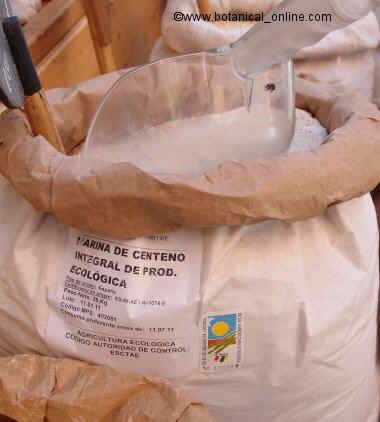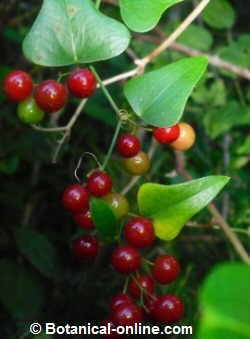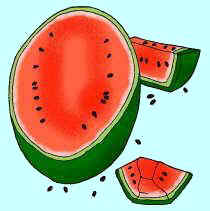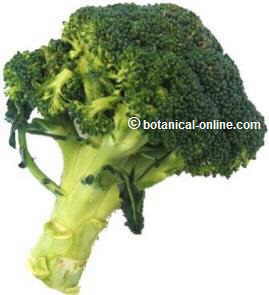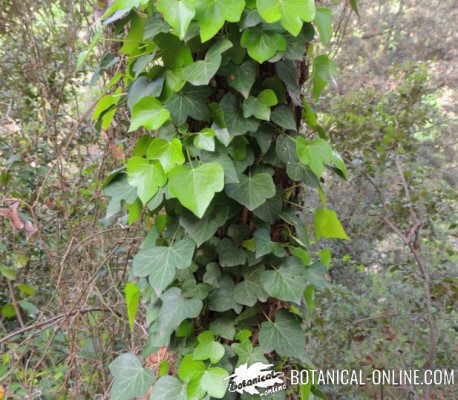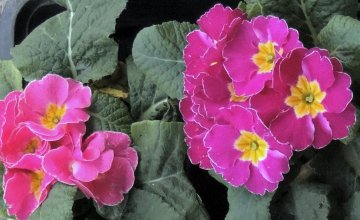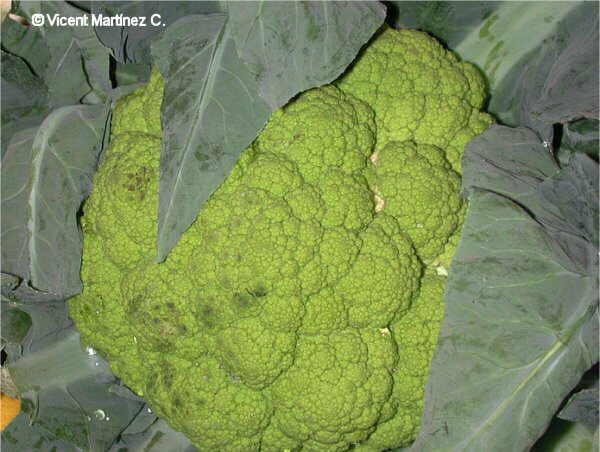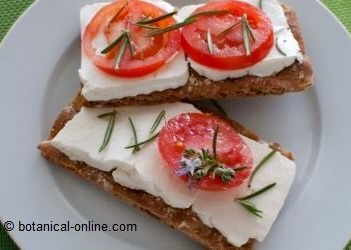Contents
What are kiwi fruits like? Varieties of kiwi fruits
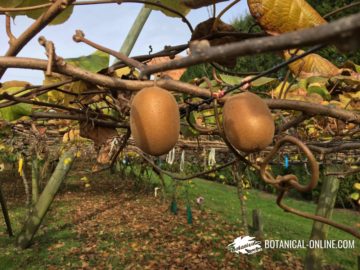
Characteristics of kiwi plant
Kiwis are the fruits of a vine, called kiwi fruit or Chinese gooseberry (Actinidia chinensis = Actinidia deliciosa). It belongs to the family of Actinidiaceae. Is a dioecious plant (there are male trees and female trees), shrubs and climbers up to 8 m high.
Kiwi stems are woody at the bottom and tender and twinning at the top, whose tendrils are used to hook on the support.
Its oval leaves are alternate, long petioled.
It bears white female flowers initially, then yellow.
The fruits are berries, gathered in clusters. They have brown skin covered with hair and are oval shaped, its flesh is green and small black seeds are arranged in a circle about the center.
Origin of kiwis
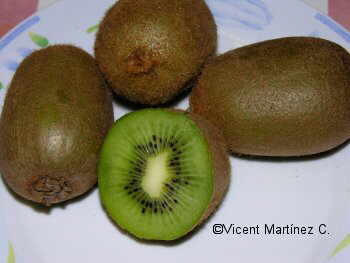
Kiwis are from the area of Zhejiang, Eastern China and Taiwan, where the inhabitants of this area ate their fruits in the wild.
Initially, its cultivation in China took place in the orchards, where the they were planted at the base of the trees that served as support.
From China the Spanish missionaries brought them to New Zealand in 1906. Kiwifruit is a plant whose cultivation adapted very well in this country to the point of making it the world’s largest producer.
New Zealand also gave the name to the fruit because the brown color of the Kiwi bird feathers is very similar to the skin color of the kiwi fruit. On the other hand, this bird feeds on this fruit.
From New Zealand it was extended to virtually all areas of the world that have a warm and humid climate.
Cultivation of kiwi fruits in the world
Today kiwifruits are grown intensively in southern Europe and the USA (California).
Other major producers are France, Italy, Russia, Australia, Chile, England, Egypt and Spain.
In Spain, it can be found in Galicia, with almost half of Spanish production, and Andalusia.
Varieties of kiwifruits
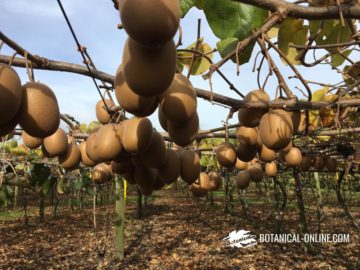
The main varieties of kiwifruits come from the three primitive species: two from New Zealand (Actinidia chiniensis and Actinidia deliciosa) and one from Taiwan (Actinidia setosa)
Varieties of kiwifruits from New Zealand:
- Haiward (Actinidia deliciosa var. Delicious cv Hayward) It is the variety most widely grown and most marketed. Its size is large and it can weigh up to 100 g. Holds well in storage. This plant can not stand the cold, so it must be planted only in warm places.
- Bruno (Actinidia deliciosa var deliciosa cv Bruno): The cultivation of this variant is still as important as Haiward. Its fruit is developed early. Largest in size and contains lots of vitamin C.Other varieties from New Zealand are Abbot, who is very sweet and aromatic, Allison or Monty, the latter with reddish-brown fruits.Matua and Tomuri male varieties are especially prized as pollinators of the above.
Varieties of kiwifruits from America:
- Varieties from California, Texas and Florida: The best known is Chico. Other varieties are Dexter and Vincent.
- Baby kiwi (Actinidia arguta) is a hybrid whose fruit reaches only three or four centimeters. It remembers the fruit of the vine, for its size and shape, although color and texture is as the rest of the kiwis. This variety, growing in Oregon, is beginning to have enough commercial importance.
- Varieties of Canada: They are coldhardy varieties, such as Saanicheon.
![]() More information on kiwi.
More information on kiwi.

